Compare
Overview
ChatGPT Strawberry vs Claude Comparison in different aspects of AI services with data mining from genuine user reviews & ratings, including: ALL,Interesting,Helpfulness,Correctness,Release Delay. AI store is a platform of genuine user reviews,rating and AI generated contents, covering a wide range of categories including AI Image Generators, AI Chatbot & Assistant, AI Productivity Tool, AI Video Generator, AI in Healthcare, AI in Education, AI in Lifestyle, AI in Finance, AI in Business, AI in Law, AI in Travel, AI in News, AI in Entertainment, AI for Kids, AI for Elderly, AI Search Engine, AI Quadruped Robot.
Reviews Comparison
Recommended Tags
-
maththug 2024-09-18 14:54I asked OpenAI o1 the question to "Provide proof of Riemann Hypothesis" and think step by step. And here is the result. "It first mentioned that there is no known proof of the Riemann Hypothesis. However, I can outline some of the key ideas and approaches". Here are the detailed steps of OpenAI o1 models' response to "Riemann Hypothesis". Step-by-Step Overview of the Riemann Hypothesis 1. Understanding the Riemann Zeta Function 2. Critical Line and Zeros 3. Connection to Prime Numbers 4. Riemann's Original Approach 5. Analytic Continuation and Functional Equation: 6. Numerical Evidence: 7. Connections to Other Areas 8. Partial Results and Related Theorems 9. Approaches and Techniques 10. Current Status Similar Comment: http://www.deepnlp.org/store/pub/pub-openai-o1
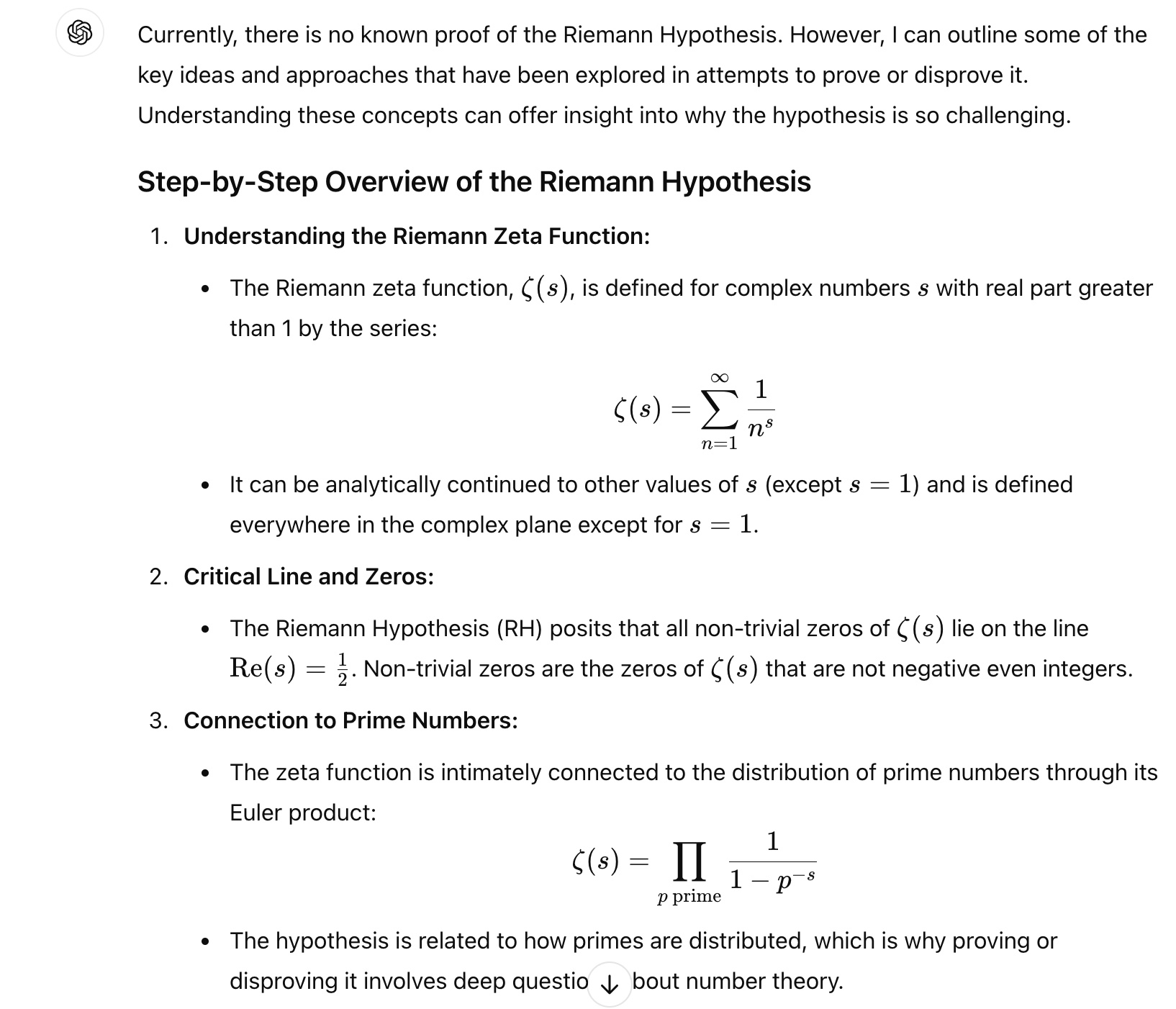
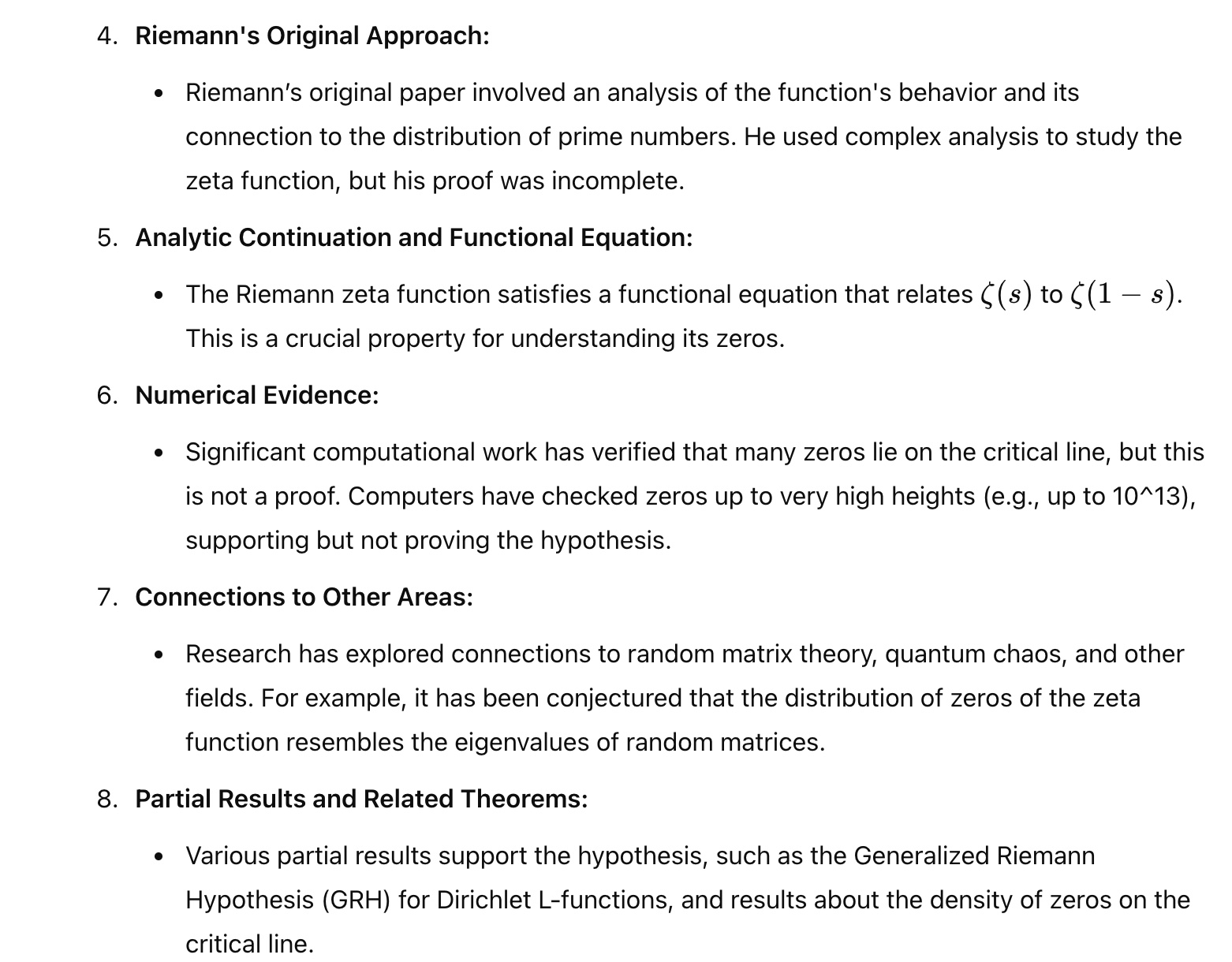

-
AILearner98 2024-09-15 10:46I just tested a math competition problem on ChatGPT Strawberry (OpenAI o1), which is taken from Alibaba Global Math Competition (reference: https://cdn.damo.alibaba.com/27be865b12eed38631ab79deebbe2637/Ali_math_competition_3_english_reference_solutions.pdf). The correct reference answer from is also attached above. In the reference materials, it's said that this question is taken from Putnam 2005, question A4. The detailed step include "It is a direct consequence of the following basic result of matrix: For any matrix A of a rows and b columns, we have The question also appears as, for example, Corollary 2.2 in Lokam’s “Spectral methos for matrix rigidity ...” J. Computer and System Sciences 64, 449–473, 2001." As you can see the result from ChatGPT strawberry (OpenAI o1), the results and steps include: Define the vector ( s = \sum_{i \in R} H_i ), where ( H_i ) is the ( i )-th row of ( H ). The entries of ( s ) are: Compute the squared norm of ( s ): But since the rows of ( H ) are orthogonal and have norm squared ( n ), we also have: Dividing both sides by ( a ) (assuming ( a > 0 )) gives: Subtract ( b a ) from both sides: Which rearranges to: Answer: Because ab cannot exceed n; that is, every such all-1 block satisfies ab ≤ n.
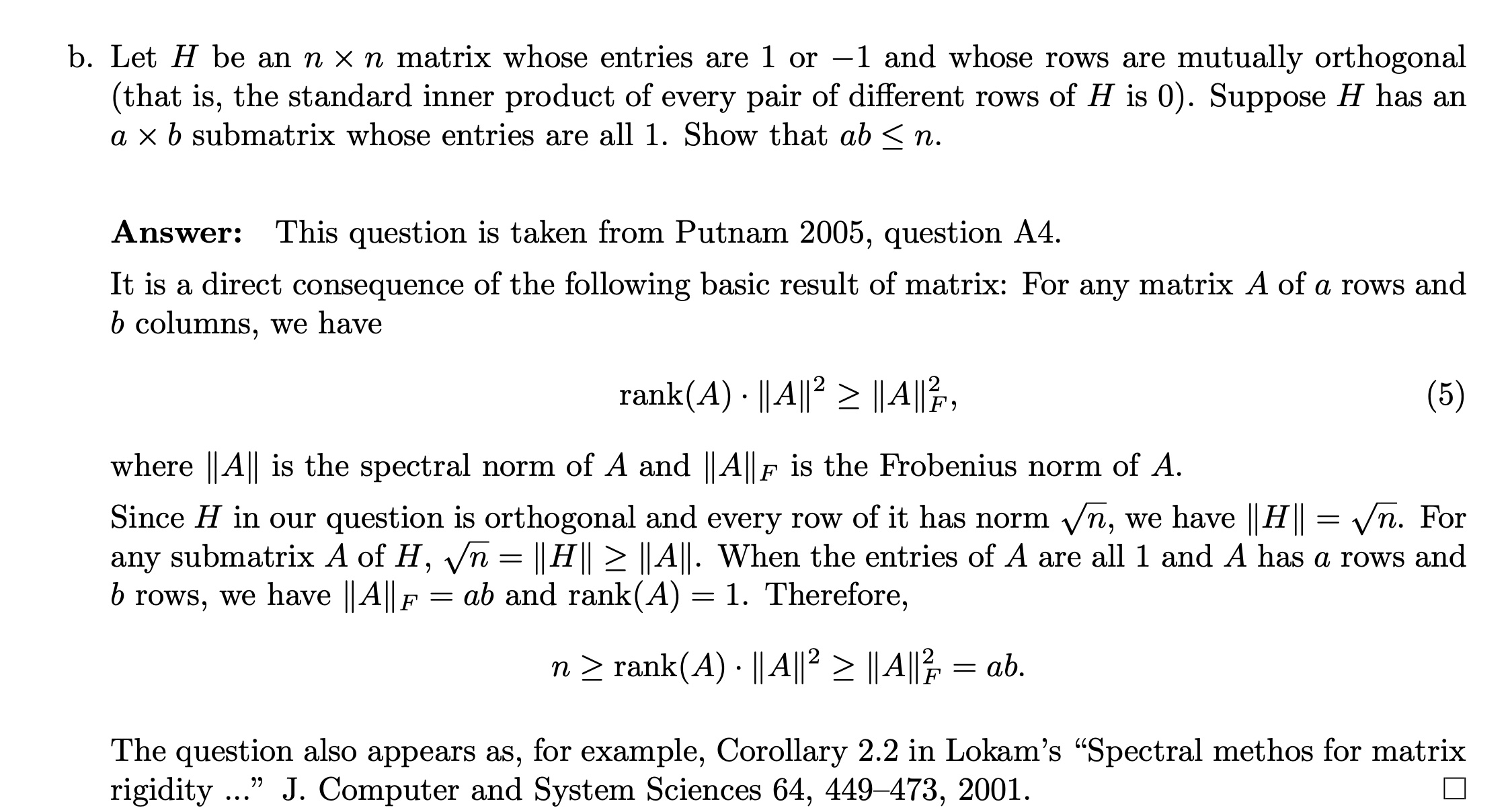
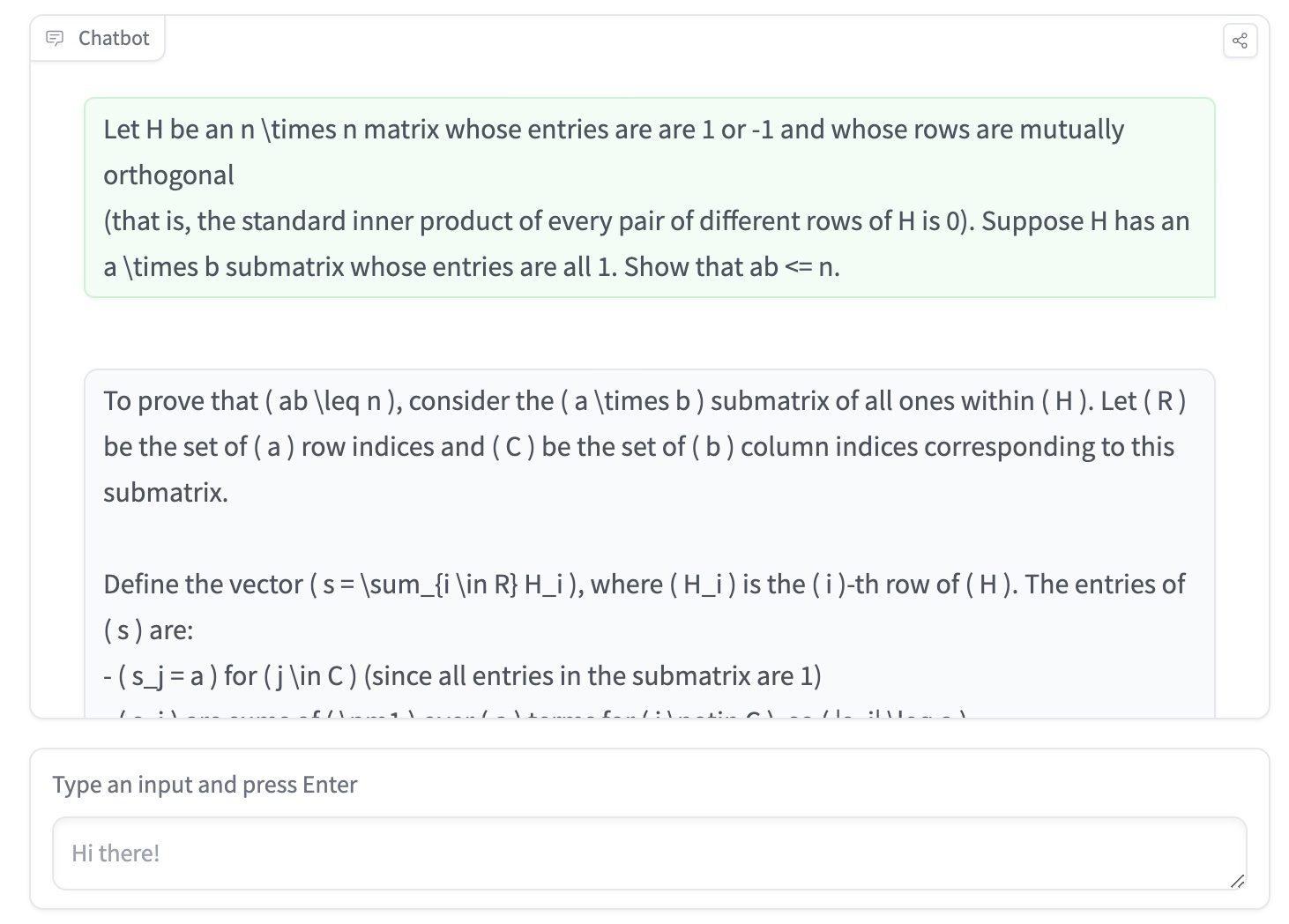
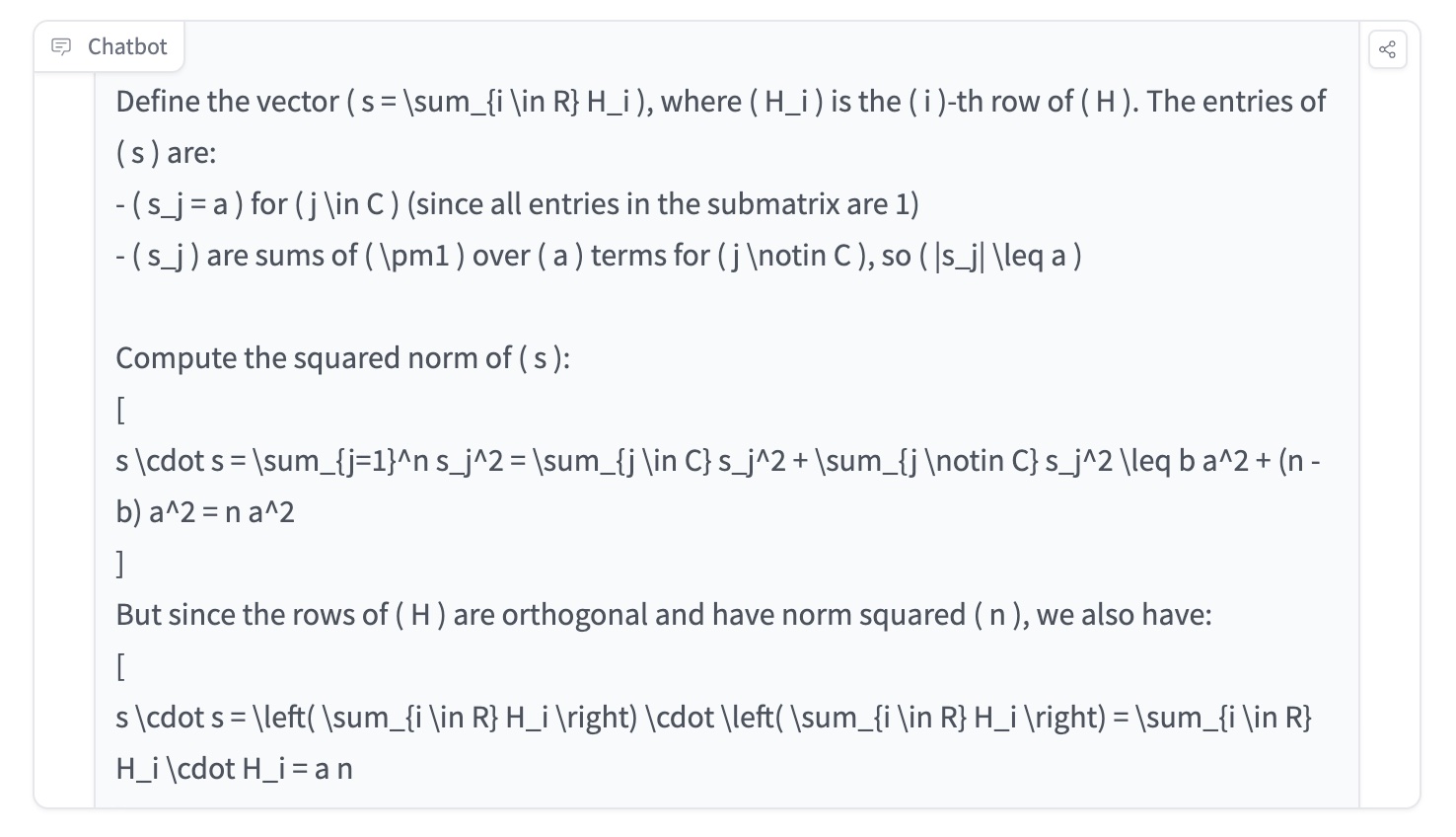
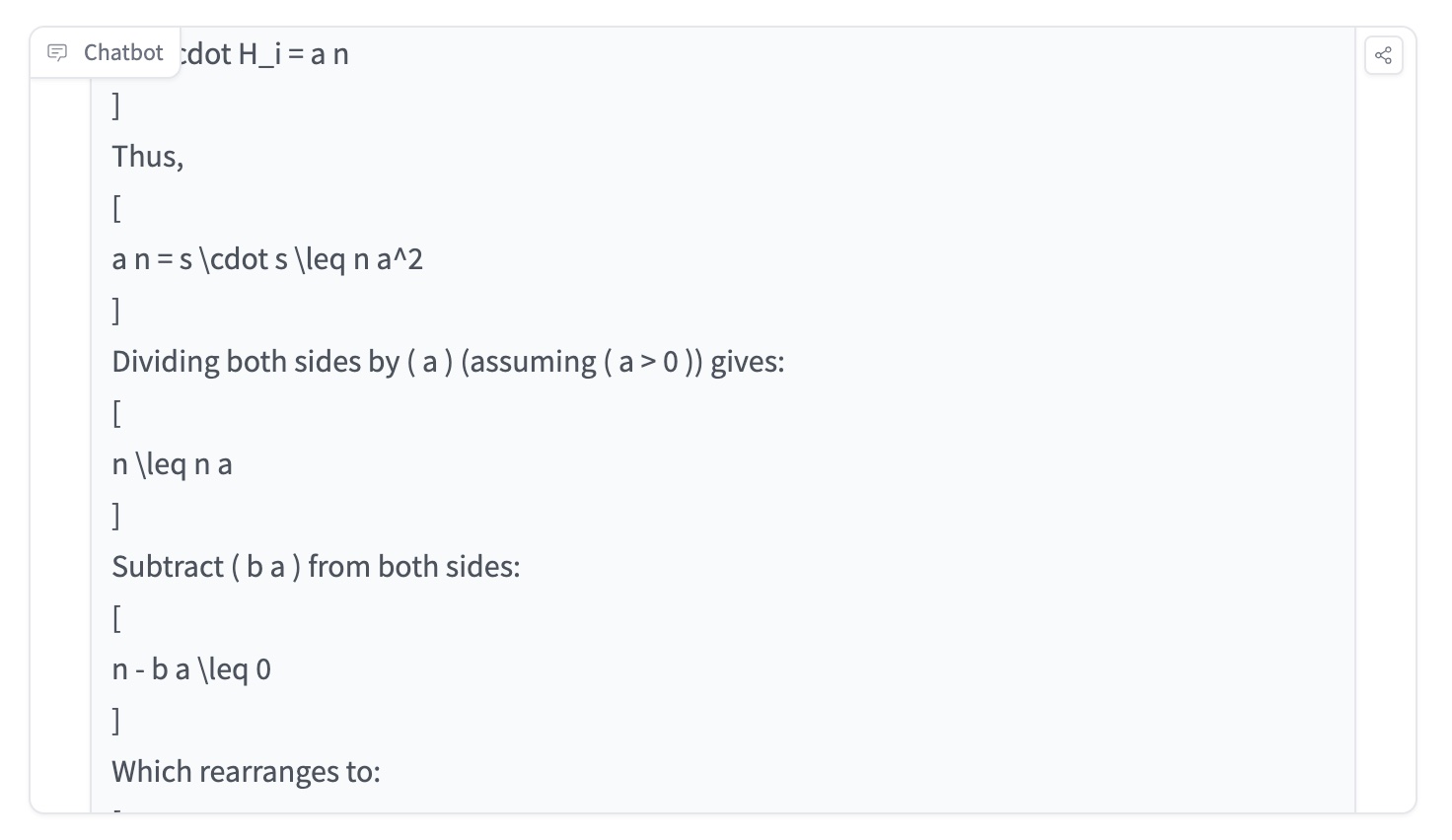
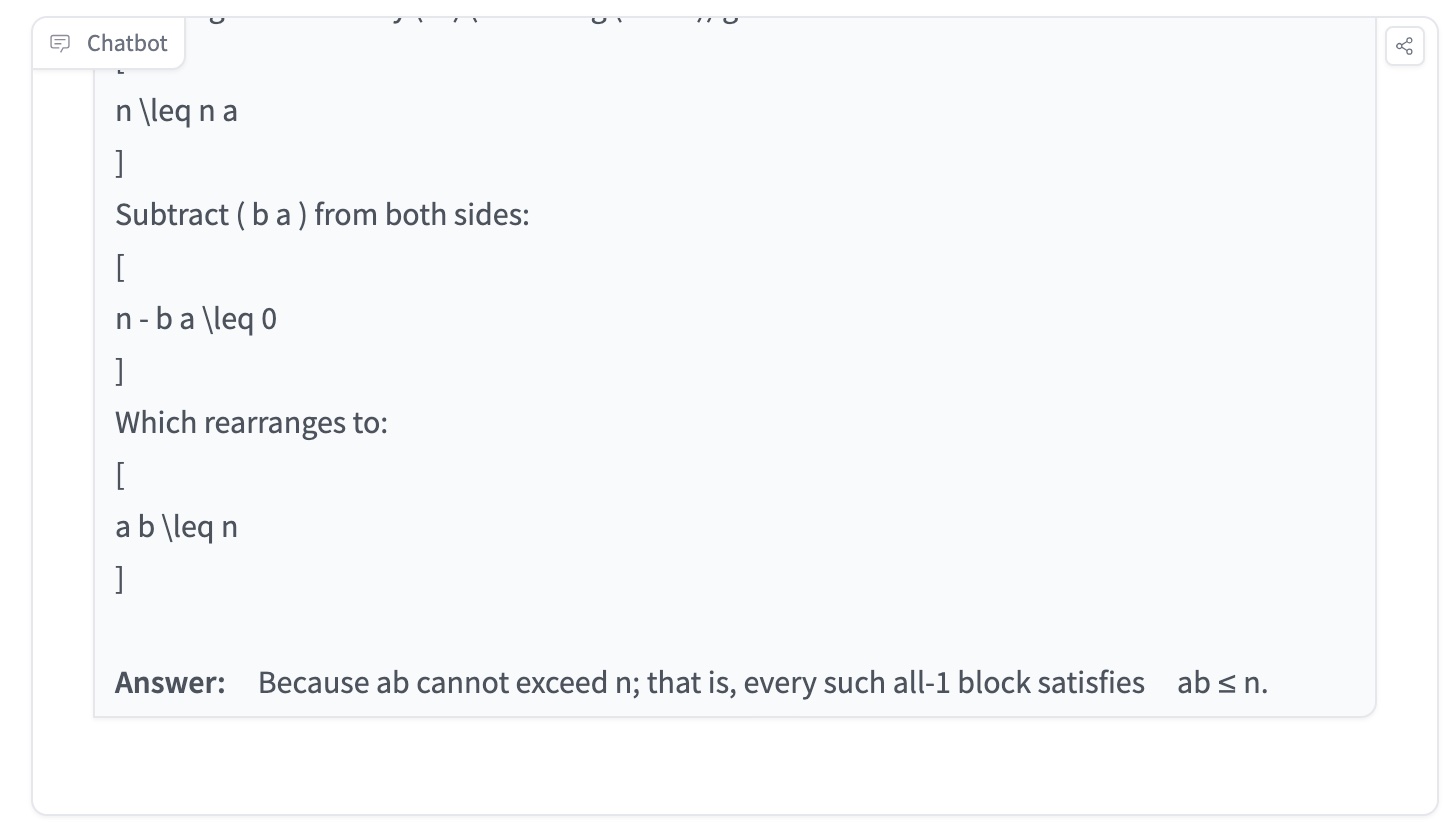
-
MayZhou 2024-09-15 10:25To test OpenAI o1 model's ability of graduate-level machine learning & math, I tried to ask OpenAI o1 to solve the problem of "Use Newton method to calculate the exact value of \sqrt{2}. Provide Detailed proof step by step." OpenAI o1 actually gives me a very long detailed step-by-step proof, which is much detailed and longer than GPT4o or GPT4o-mini. The complete response is very long and I just summarized the detailed steps of the reasoning here. Overall, I think OpenAI o1 can provide more accurate responses than previous GPT4o' answers. But the response usually is very long and there are a lot of top-down break-down, which makes the final result correct but sometimes hard to understand and follow. OpenAI o1 breaks down the machine learning math problem into these steps: ### Step 1: Define the Function and Its Derivative ### Step 2: Derive the Newton's Method Iteration Formula ### Step 3: Choose an Initial Approximation ### Step 4: Perform Iterations ### Step 5: Understanding the Result Each iteration yields a rational approximation that gets closer to ( \sqrt{2} ): - Iteration 1: ( x_1 = \dfrac{3}{2} = 1.5 ) - Iteration 2: ( x_2 = \dfrac{17}{12} \approx 1.4167 ) - Iteration 3: ( x_3 = \dfrac{577}{408} \approx 1.41422 ) - Iteration 4: ( x_4 = \dfrac{667,217}{471,632} \approx 1.41421 ) ### Conclusion Using Newton's method with the function ( f(x) = x^2 - 2 ) and starting approximation ( x_0 = 1 ), we generate a sequence ( { x_n } ) defined by: [ x_{n+1} = \frac{1}{2} \left( x_n + \frac{2}{x_n} \right) ] This sequence converges to ( \sqrt{2} ) as ( n ) approaches infinity. ### Final Answer By applying Newton's method to the equation ( x^2 - 2 = 0 ), we find that ( \sqrt{2} ) is the limit of the sequence: [ x_{n+1} = \dfrac{1}{2} \left( x_n + \dfrac{2}{x_n} \right) ] Starting from ( x_0 = 1 ), each iteration gives a rational approximation of ( \sqrt{2} ). Although we cannot express ( \sqrt{2} ) exactly using Newton's method (since it's irrational), the method provides increasingly accurate approximations.




-
MayZhou 2024-09-14 12:13I tested ChatGPT Strawberry or o1 model this high school calculus math problem, which is to "Calculate the first order derivative of function f(x)=\frac{1}{x} at the point x=2.". ChatGPT o1 gives me the precision answer in detailed step of what's the derivative of function of f(x) and what's the value at point x=2. The calculation is very detailed and helpful. By the way, I am using the huggingface model apps of OpenAI o1 API, which doesn't requires the subscription.
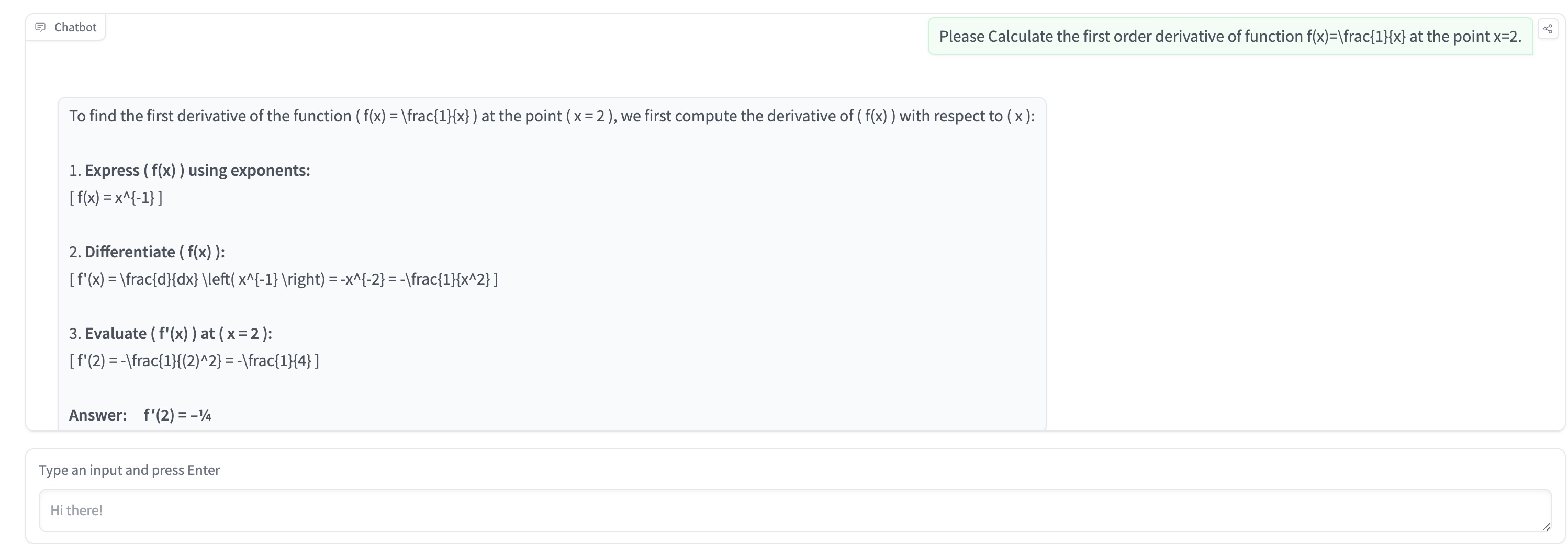
-
SimonDarkNight 2024-09-11 22:42Since Open AI always delayed their new model release date and rumors are going around. I am writing the review now and will revise my review if their model is released without any delay. This time the Strawberry project is said to have improved reasoning ability and Orion or GPT-next is the backend model name. I would like to see how will this new model respond to the prompt "how many letter 'R' in Strawberry". Will it count the letter 'R' correctly this time? In their GPT4o model, it obviously answered the wrong number as two 'R' in the word 'Strawberry'.


-
kai 2025-05-23 09:26Price is $3 per million input tokens $15 per million output tokens. Still a little bit expensive in performing complex tasks.
-
kai 2025-05-23 09:25Claude Opus 4 claims that Claude Sonnet 4 achieves strong performance across SWE-bench for coding, TAU-bench for agentic tool use, and more across traditional and agentic benchmarks. It's astonishing what's the performance compared to OpenAI O4 and other models?
-
kai 2025-05-23 09:11Claude 4 is the most exciting model reason I am expecting in 2025 since OpenAI stop release new capable models. Its coding and AI agents capability is the most desirable features of future workflows and AI automation. Hopefully the API price will not increase too much.
-
ai4science03 2024-09-09 12:48Claude gives the correct answer to the math problem of finding the differentiation of a function. The result is very similar to the ones of Gemini for the same question "differentiation of function f(x) = e^x + log(x) + sin(x)?". And it also give the restriction of x>0 because there is a function log(x) in the original function. So it's pretty helpful.

-
ai4science03 2024-09-09 12:23Claude answered my math question of solving a quadratic equation. It uses the quadratic formula and set the coefficient a=1, b= 5, c= 6 to the quadratic formula and gets the exact answer. The proof and the step by step solution is exactly correct and very much helpful!

-
zyncg 2024-09-05 08:24Claude does an amazing job writing code for the trap water Leetcode. It also provides explanation of the algorithm complexity.
-
wilsonz1989 2024-09-03 18:06I've tested the AI model implementation ability of multiple AI Code Generators. And for this prompt "Self Attention Layer in Transformer", Claude provides the best overall response. The pytorch implementation of Transformer model's self attention layer is correct. And the detailed explanation is really helpful. For example, it introduce the breakdown of the python code, including the "__init__" method, the forward method, the input tensor, the attention energy function, etc. And I will also attach the detailed text response here: """ Claude Sonnet 3.5 Here's a breakdown of how this code works: The __init__ method initializes the linear layers for the value, key, and query projections, as well as the final linear layer that combines the multi-head outputs. The forward method takes in the values, keys, query, and an optional mask tensor. The input tensors are reshaped to have a separate dimension for the number of heads, so that we can perform multi-head attention in parallel. The value, key, and query tensors are projected using the respective linear layers. The attention energy is computed using the einsum operation, which performs the scaled dot-product attention operation across all heads in parallel. If a mask tensor is provided, the attention energies corresponding to the masked positions are set to a very large negative value, so that they get zeroed out after applying the softmax. The attention probabilities are computed by applying softmax to the attention energies. The values are weighted by the attention probabilities using another einsum operation, and the results are concatenated across the head dimension. Finally, the concatenated tensor is projected using the final linear layer to obtain the output of the self-attention layer. You can use this SelfAttention module as a part of your Transformer architecture by applying it to the input embeddings and optionally using the output as the input to the feed-forward network. """



-
Thomas Wilson 2024-06-24 14:22Claude gives me several reason of hiring personal injury lawyers. But it doesn't give more information on the reasons of not hiring a lawyer, not it's tailed to my specific question "victims of car or truck accident". So I will only gives it an average rating. Not very helpful, and I still need to search for more information after asking Claude this question.

-
Community
-
Please leave your thoughts on the best and coolest AI Generated Images.
-
Please leave your thoughts on free alternatives to Midjourney Stable Diffusion and other AI Image Generators.
-
Please leave your thoughs on the most scary or creepiest AI Generated Images.
-
We are witnessing great success in recent development of generative Artificial Intelligence in many fields, such as AI assistant, Chatbot, AI Writer. Among all the AI native products, AI Search Engine such as Perplexity, Gemini and SearchGPT are most attrative to website owners, bloggers and web content publishers. AI Search Engine is a new tool to provide answers directly to users' questions (queries). In this blog, we will give some brief introduction to basic concepts of AI Search Engine, including Large Language Models (LLM), Retrieval-Augmented Generation(RAG), Citations and Sources. Then we will highlight some majors differences between traditional Search Engine Optimization (SEO) and Generative Engine Optimization(GEO). And then we will cover some latest research and strategies to help website owners or content publishers to better optimize their content in Generative AI Search Engines.
-
We are seeing more applications of robotaxi and self-driving vehicles worldwide. Many large companies such as Waymo, Tesla and Baidu are accelerating their speed of robotaxi deployment in multiple cities. Some human drivers especially cab drivers worry that they will lose their jobs due to AI. They argue that the lower operating cost and AI can work technically 24 hours a day without any rest like human will have more competing advantage than humans. What do you think?
-
Please leave your thoughts on whether human artists will be replaced by AI Image Generator. Some similar posts on other platforms including quora and reddit. Is art even worth making anymore, Will AI art eventually permanently replace human artists, Do you think AI will ever replace artists, Do people really think that replacing artists with ai is a good idea


Reply